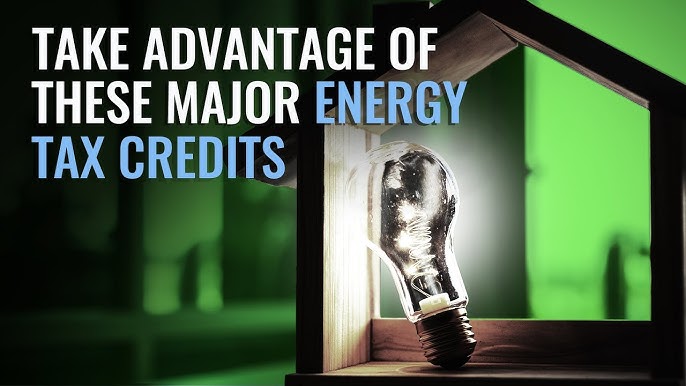
Sep
If you made energy improvements to your home in 2023, you may be eligible for some new tax credits. The Inflation Reduction Act of 2022 did away with the old, and frankly useless, tax credits that only allowed you to deduct up to $500 for the lifetime of the taxpayer and replaced them with the ability to receive yearly incentives! Homeowners who improve their primary residence will find the most opportunities to claim credits, however, renters may also be able to claim credits too, as well as owners of second homes used as residences. That part is brand new and opens up lots of possibilities.
The improvements have been split into a couple different types of credits, the Energy Efficient Home Improvement Credit and the Residential Clean Energy Credit. The Energy Efficient Home Improvement Credit is for exterior doors, windows, skylights and insulation materials, central air conditioners, water heaters, furnaces, boilers, heat pumps, biomass stoves and boilers, as well as home energy audits. This credit is currently available for installations done in 2023 through 2032 and has a 30% expense credit up to a maximum of $1,200 a year. Biomass stoves and boilers have a separate limit up to $2,000.
The Residential Clean Energy Credit is for solar, wind, geothermal power generation, as well as solar water heaters, fuel cells, and battery storage. The amount of the credit for these items depends on the year of installation. For improvements done in 2022 to 2032 you can get a credit of 30% of the installation cost with no annual maximum limit AND any leftover tax credit can carry forward to the next tax year to take advantage of it then too. For example, if your tax for the year is $7,000 and your 30% installation credit is $8,000 you will wipe out all of your tax in year one and a $1,000 tax credit will roll over to the next tax year for you to take it then too. The tax credit will decline to 26% starting in 2033 and then again to 22% in 2034.
Vehicle Energy Credits have gotten a boost too! You may qualify for a credit up to $7,500 if you buy a new, qualified plug-in EV or fuel cell electric vehicle (FCV) for purchases in 2023 to 2032. To qualify, you must:
* Buy it for your own use, not for resale purposes.
* Use it primarily in the US.
* Must have final assembly in North America (Mexico, US, or Canada).
* Must be manufactured by a qualified manufacturer.
* Must have a gross vehicle weight rating of less than 14,000 pounds.
* Must have four wheels and be road legal (public streets, roads and highways).
* Must have an electric motor with a battery capacity of 7kW hours or more and be capable of being recharged from an external source of electricity.
If you are in the market for an EV and want to see if your car of choice qualifies we suggest you visit the website below to search by make and model:
https://www.fueleconomy.gov/feg/tax2023.shtml
If you purchased a new EV this year and do qualify for the credit, let us know now and we’ll let you know everything we need to make sure that credit lands on your return for this upcoming tax season!

